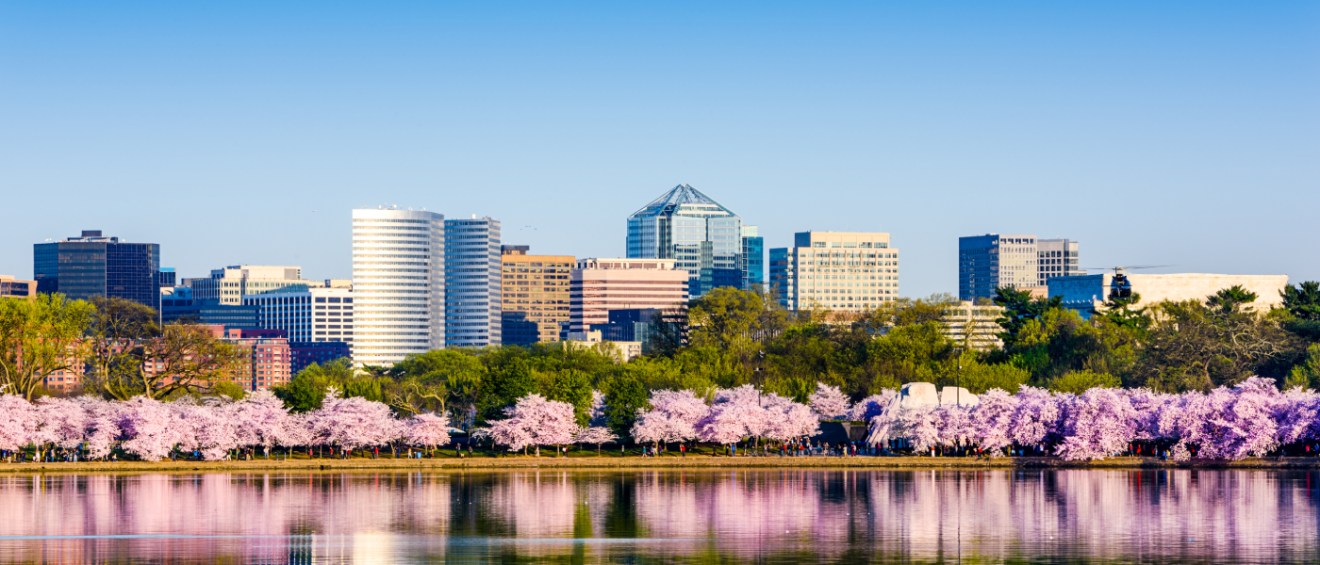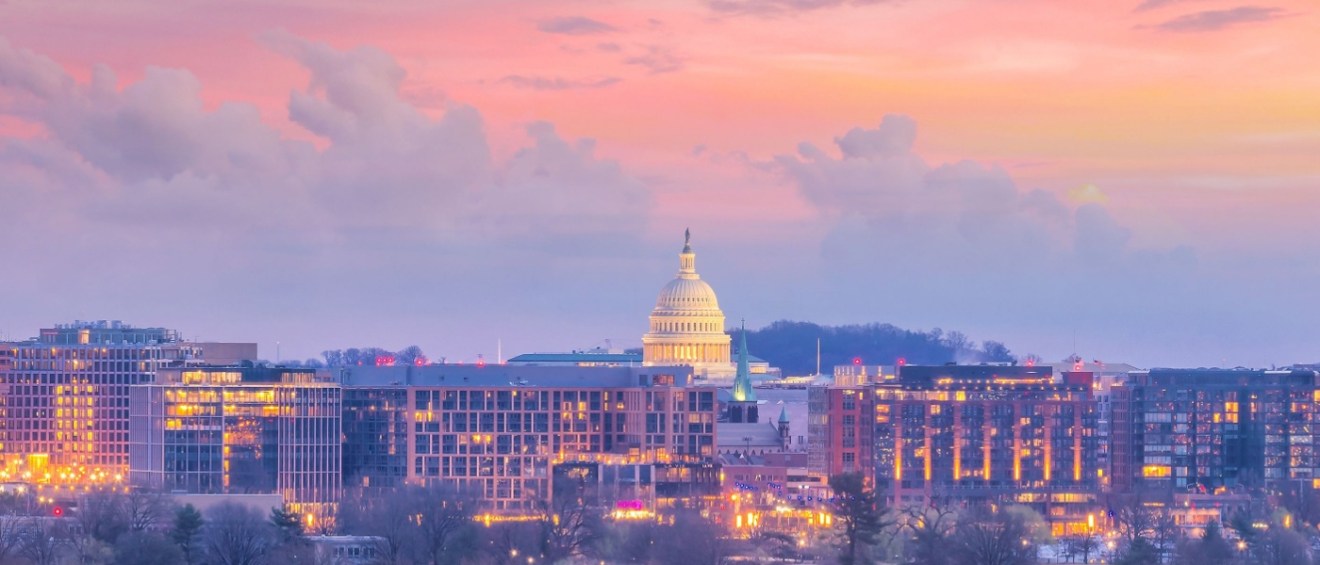Share this article:
Renting in the nation’s capital definitely has its perks — and chief among them is having access to one of the most comprehensive public transit networks in the country. The public transit in Washington, DC, isn’t just a nice-to-have. For many residents, it’s what makes daily life possible. For renters, in particular — including those commuting to government buildings, nonprofit offices, or downtown jobs — public transit in Washington, DC, is a key part of the daily routine.
With DC’s dense neighborhoods, limited parking, and steady stream of professionals on the go, living near reliable public transportation can make a huge difference. That’s why many renters prioritize access to Metro stations or bus routes when searching for apartments. Whether you’re a federal employee, college student, or remote worker who moves frequently, being close to transit means less hassle and more flexibility in your day.

However, what really sets the Washington, DC, public transit apart is how well it connects the city. From quiet residential pockets to busy business districts, universities, and museums, getting around without a car is often the smarter option. Plus, with traffic being a constant challenge, relying on DC’s public transportation system can save you time, money, and stress.
Let’s take a closer look at the top transportation options that renters should keep in mind when choosing where to live in the nation’s capital:
- Metrorail
- Metrobus
- DC Circulator
- Capital Bikeshare
- Streetcar
- Ride On and Fairfax Connector
- MARC and VRE Commuter Rail
- Amtrak at Union Station
Metrorail (Metro)
The Washington Metro is the backbone of the public transit in Washington, DC. It consists of six color-coded lines that stretch across the city and into nearby suburbs. For renters, being close to a Metro station often means a smoother, more predictable commute.

Metro access is especially important for those working in Downtown DC, Capitol Hill, or at federal agencies. That’s because trains run frequently during peak hours and offer air-conditioned rides, escalators, and elevators, making the metro accessible and commuter-friendly.
Metrobus
Metrobus complements the Metrorail by covering routes not directly accessible by train. It’s especially useful for renters in neighborhoods like Adams Morgan, Mount Pleasant and Takoma, where train lines may not reach.
With hundreds of routes and stops across the DC metro area, Metrobus offers renters flexibility and convenience. Plus, any buses are equipped with bike racks and real-time GPS updates, making the experience smoother and more predictable.
DC Circulator
The DC Circulator is a great perk of the Washington, DC public transit system. With simple routes and affordable fares, the Circulator serves popular areas like Georgetown, the National Mall, and Union Station.
For renters, this service is perfect for short commutes or casual rides to major cultural and shopping districts. It’s particularly useful for students and young professionals who want to explore the city without the hassle of transferring between multiple bus or train lines.
Capital Bikeshare
If you prefer biking, Capital Bikeshare provides a fun and flexible option. With thousands of bikes and docking stations across the city, this system makes getting around quick and environmentally friendly.
Renters often enjoy having a Bikeshare station near their building, especially in walkable neighborhoods like Dupont Circle, Shaw or Navy Yard. It’s ideal for short trips, last-mile commutes, or weekend exploring.
Streetcar (H Street/Benning Road Line)
The streetcar is a lesser-known, but valuable part of the public transportation in Washington, DC. It currently runs along the H Street Corridor, an area that’s popular with renters thanks to its nightlife and food scene.

The streetcar is free to ride and helps renters travel easily through this growing neighborhood. While the system is still expanding, it adds an extra layer of convenience for those living near the route.
Ride On and Fairfax Connector
For renters living in the Maryland or Virginia suburbs who work in DC, Ride On (Montgomery County) and Fairfax Connector (Northern Virginia) provide essential links to the city’s core. These services integrate with Metro stations, offering a smooth transition into DC.
For those who prefer quieter, suburban neighborhoods with lower density, these buses are a key part of the broader Washington, DC public transit network.
MARC and VRE Commuter Rail
If you live farther out in Maryland or Virginia, the MARC and VRE commuter trains are strong alternatives to driving. These trains connect suburban areas directly to Union Station and other downtown hubs.
Renters who don’t mind a longer, but more comfortable commute often choose apartments near these lines. The trains offer seating, restrooms, and Wi-Fi on board, making them great for those with flexible work schedules.
Amtrak at Union Station
While technically a long-distance option, Amtrak also supports regional travel. For renters who regularly visit New York City, Philadelphia or Baltimore, living near Union Station can be a big plus. Amtrak also ties into the larger public transit network, including Metro and bus lines, allowing for easy local connections.

When considering where to live in Washington, DC, public transit should be a top priority for renters. From recent graduates to long-time professionals, living near quality transit is a game-changer: It cuts down on commute times, reduces the need for a car, and opens up the city’s many neighborhoods and amenities.
So, as you search for your next apartment, keep Washington, DC public transit at the top of your checklist. Your daily commute (and your peace of mind) may just depend on it.
Share this article:
Veronica Grecu is a senior creative writer and research analyst for RentCafe. With more than 14 years of experience in the real estate industry, she covers a variety of topics in the apartment market, including rental competitiveness, new construction and other industry trends. Her work has been featured in top publications like The New York Times, The Washington Post, The Wall Street Journal, The Philadelphia Inquirer, The Miami Herald, CNN, CNBC, and more. Prior to RentCafe, Veronica was involved in producing real estate content for Multi-Housing News, Commercial Property Executive and Yardi Matrix. She holds a B.A. in Applied Modern Languages and an M.A. in Advertising and PR.
The Ready Renter has your back
Tips, news, and research curated for renters, straight to your inbox.




Related posts
Subscribe to
The Ready Renter newsletter







